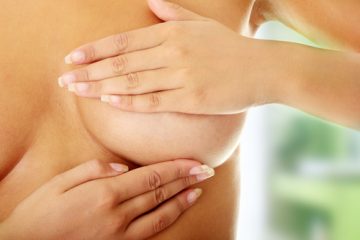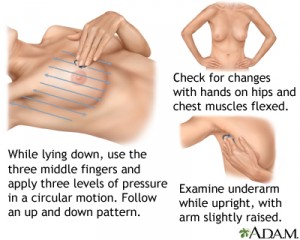How to Do a Breast Self-Exam

Also read: What You Need to Know About Mammograms
The fact is, experts don’t agree on whether or not we should recommend self breast exams. The evidence doesn’t support or deny its effectiveness. For what it is worth, as a woman, a physician, a friend, and a sister, my feeling is this … why not?
If you are a woman, your chance of getting breast cancer is 1 in 8. Your chance of dying from breast cancer is 1 in 36. Early detection is key to not being part of the second statistic.
Self breast exams are easy, free and proactive. It is critical to be an active participant in your healthcare … especially in the current medical climate. Besides, at my age and with five kids, a self breast exam could turn out to be the best part of my month.
WHEN IS THE BEST TIME TO DO A SELF BREAST EXAM
• The best time to do a self breast exam is about 3 – 5 days after your period starts. Your breasts are not as tender or lumpy at this time in your monthly cycle. If you have gone through menopause, do your exam on the same day every month. As a reminder, here is the “how to” from the National Institute for Health:
Begin by lying on your back. It is easier to examine all breast tissue if you are lying down.
1. Place your right hand behind your head. With the middle fingers of your left hand, gently yet firmly press down using small motions to examine the entire right breast.
2. Next, sit or stand. Feel your armpit, because breast tissue goes into that area.
3. Gently squeeze the nipple, checking for discharge. Repeat the process on the left breast.
4. Use one of the patterns shown in the diagram to make sure that you are covering all of the breast tissue.
5. Next, stand in front of a mirror with your arms by your side. Look at your breasts directly and in the mirror. Look for changes in skin texture, such as dimpling, puckering, indentations, or skin that looks like an orange peel. Also note the shape and outline of each breast.
6. Check to see if the nipple turns inward.
Do the same with your arms raised above your head.
WHAT ARE YOU LOOKING FOR?
The most important thing is to become familiar with your breasts and to note any changes month over month. Most breasts have some lumps and bumps. Concerning ones are those that are new or that have changed in either size or consistency. If you have any questions, please go to your doctor. I know you are busy but don’t be careless with your life.
If you are 40 or older, schedule your annual mammography. I am going to call for mine today.
Originally posted October 1, 2016





















